
As a business evolves and scales, so does its potential attack surface. Whether through acquisitions, new markets, new technology, or cloud adoption, its digital footprint will grow exponentially.
Public clouds are a big part of corporate growth, and end-user spending related to this field is estimated to reach $723 billion in 2025.
Expanding cloud environments require a more advanced and scalable security operations (SecOps) strategy. But scaling your security posture isn’t just about hiring security professionals. It’s about finding a perfect blend between people, processes, and technology.
This practical guide explores how organizations can efficiently scale their SecOps teams and operations to mitigate risk in a landscape where new threats emerge daily.
Align SecOps with expansion plans
When you scale your business, your security needs intensify. However, SecOps teams will need to scale a bit slower, not simultaneously. Every expansion doesn’t demand ballooning resources. Instead, it’s best to become more efficient without a proportional increase in staff, budget, or tools.
Leverage AI
The best approach is to leverage AI-powered tools to automate and streamline repetitive tasks and refine processes; this will eliminate waste while enhancing threat detection and response. Automated monitoring, for example, can flag suspicious activity across a growing network, allowing SecOps teams to manage increased complexity without doubling their headcount.
Threat actors move at the speed of AI, crafting sophisticated phishing campaigns or scanning for vulnerabilities at scale; AI empowers these adversaries to move faster and strike harder. As the attack surface widens, SecOps must integrate AI into their own defense strategies.
For instance, AI-driven threat detection and response leverages advanced machine learning (ML) to quickly identify, predict, and mitigate threats with greater accuracy and automation, enhancing overall cybersecurity effectiveness.
Bring SecOps on board early
To better align security with business growth, SecOps must know the organization’s roadmap early on, ideally, from the start. Involving SecOps leadership in strategic discussions about new initiatives ensures security is baked into the process, not patched on later.
If a company plans to acquire a smaller firm, the SecOps team can assess the target’s security posture up front, allowing them to thwart inherited vulnerabilities from becoming costly surprises. This proactive integration makes scaling both smart and secure.
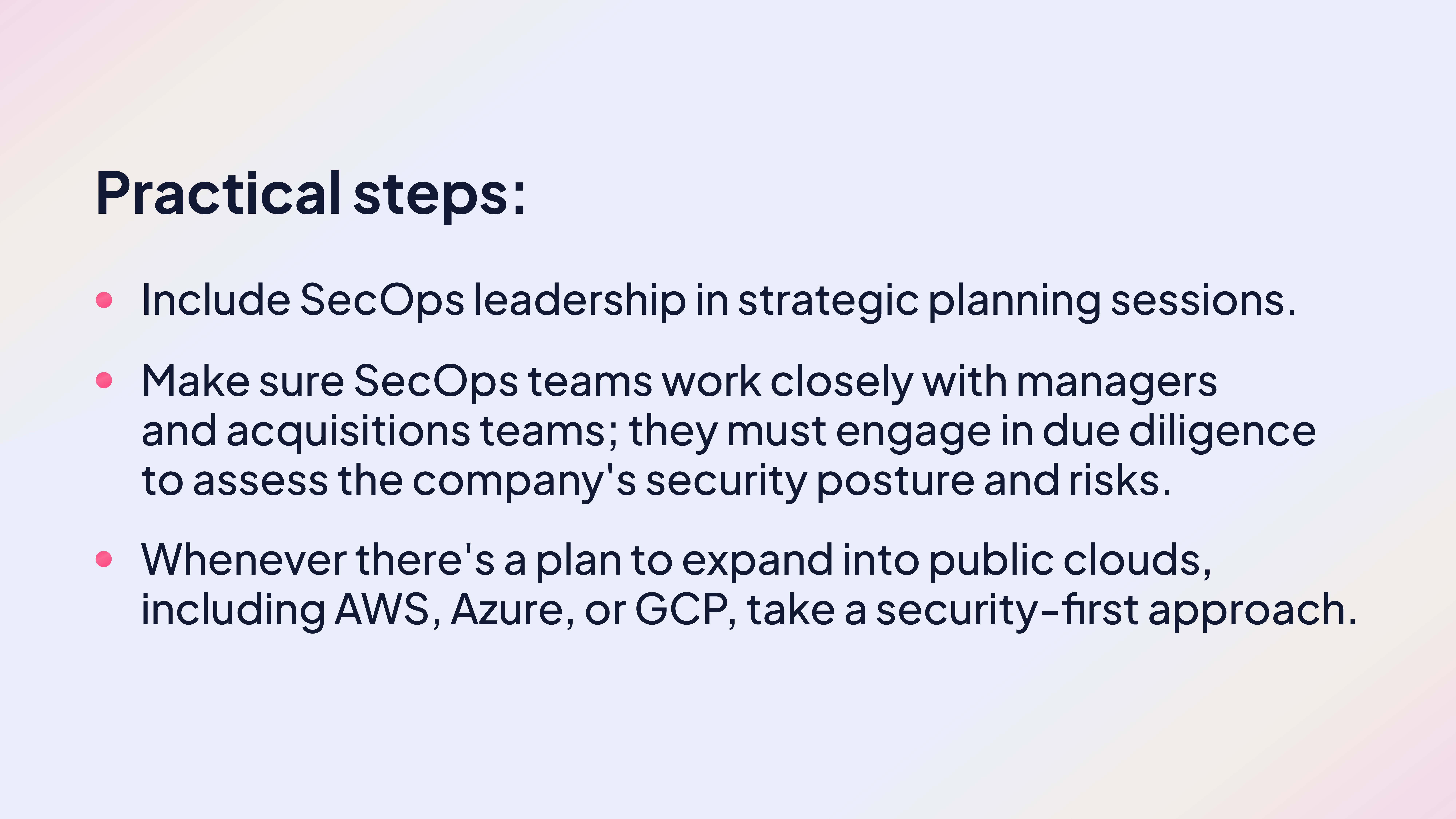
Analyze and understand the growing attack surface
SecOps must have an in-depth understanding of every asset, connection, and potential weak point to build defenses that scale effectively and seamlessly while also addressing an environment’s full complexity.
Map, update, assess
Map the attack surface to identify and catalog all assets, including applications, APIs, cloud resources and workloads, endpoints, SaaS platforms, and third-party integrations. Also, automate discovery across your organization, including newly acquired companies and cloud environments, as manual efforts fail to keep pace.
Continuously updating threat models and conducting regular risk assessments are critical steps to reflect new assets, emerging threats, and shifting priorities. This approach ensures defenses remain aligned with the current risk landscape and are responsive to change.
Remember: Concentrate on high-value assets and vulnerabilities using frameworks like MITRE ATT&CK, and prioritize vulnerabilities based on real-world attack tactics. This will optimize your resource allocation.
SecOps: A powerful ally during an acquisition
In an acquisition scenario, SecOps must use multi-source data integration tools to add the new company’s assets, processes, and tools to their overall security posture. This complex task goes beyond mere inclusion of additional data. It weaves new elements into a unified security framework to ensure consistency and visibility across environments.
Develop a 90-day integration plan to closely align the acquired company’s SecOps with your organization’s established standards. SecOps can then quickly close security gaps, unify security, and fortify enterprise infrastructure by conducting simulated threats in new environments.
Real-world simulations
Controlled attack simulations provide invaluable stress testing for security processes and tools. These exercises shed light on scalability constraints and procedural gaps before threat actors exploit them.
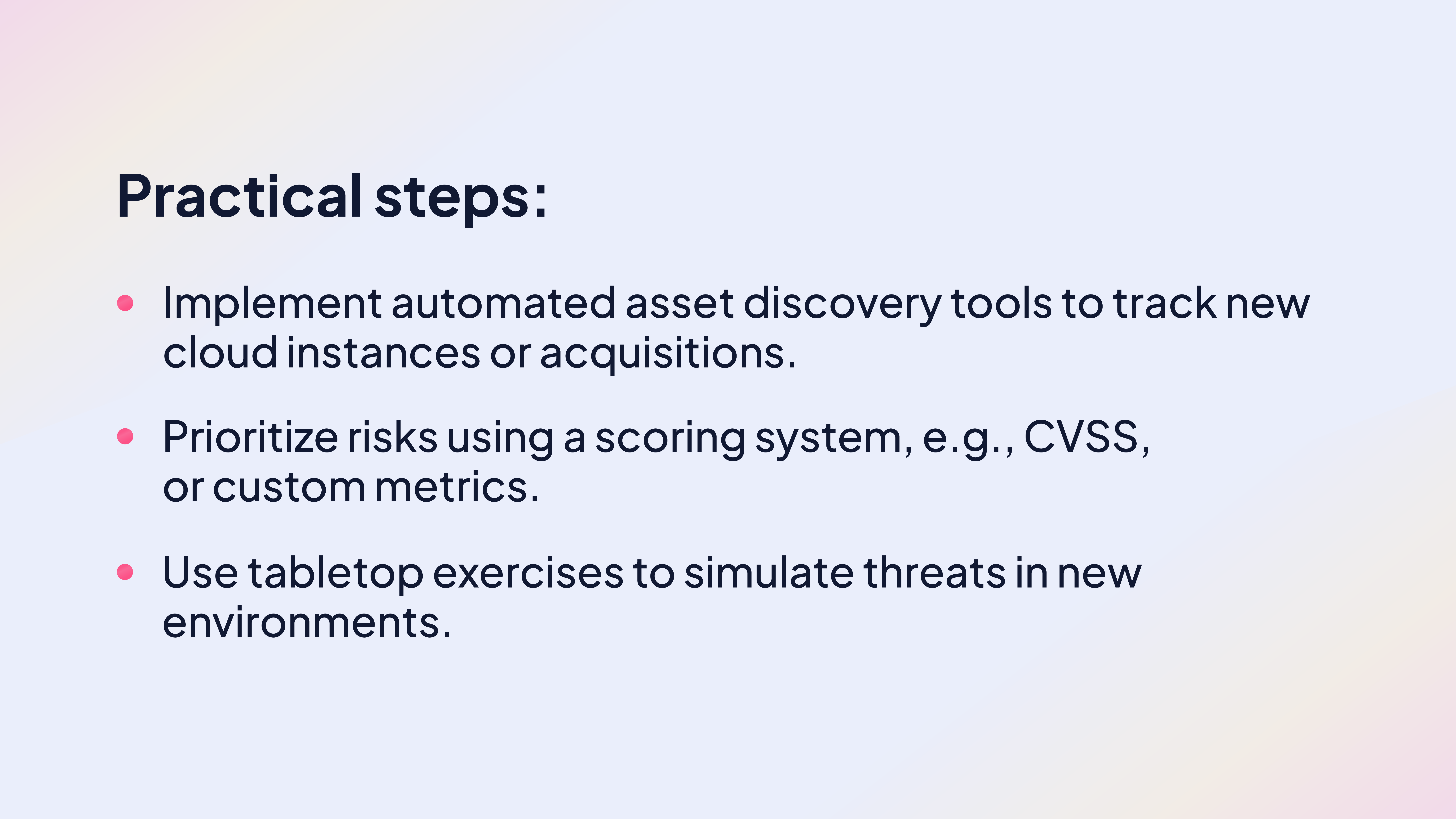
Identify opportunities to optimize and automate before hiring
Before scaling your security operations, find ways to automate as much as possible. Hiring more people to address scaling challenges should only be a last resort. Automation can handle repetitive, time-consuming tasks, streamline workflows, minimize manual effort, and scale efficiently on demand, making it a smarter and more cost-effective solution.
For example, AI tools can handle high alert volumes, allowing SecOps teams to manage growing workloads without requiring more staff or resources as risk exposure grows and threats increase.
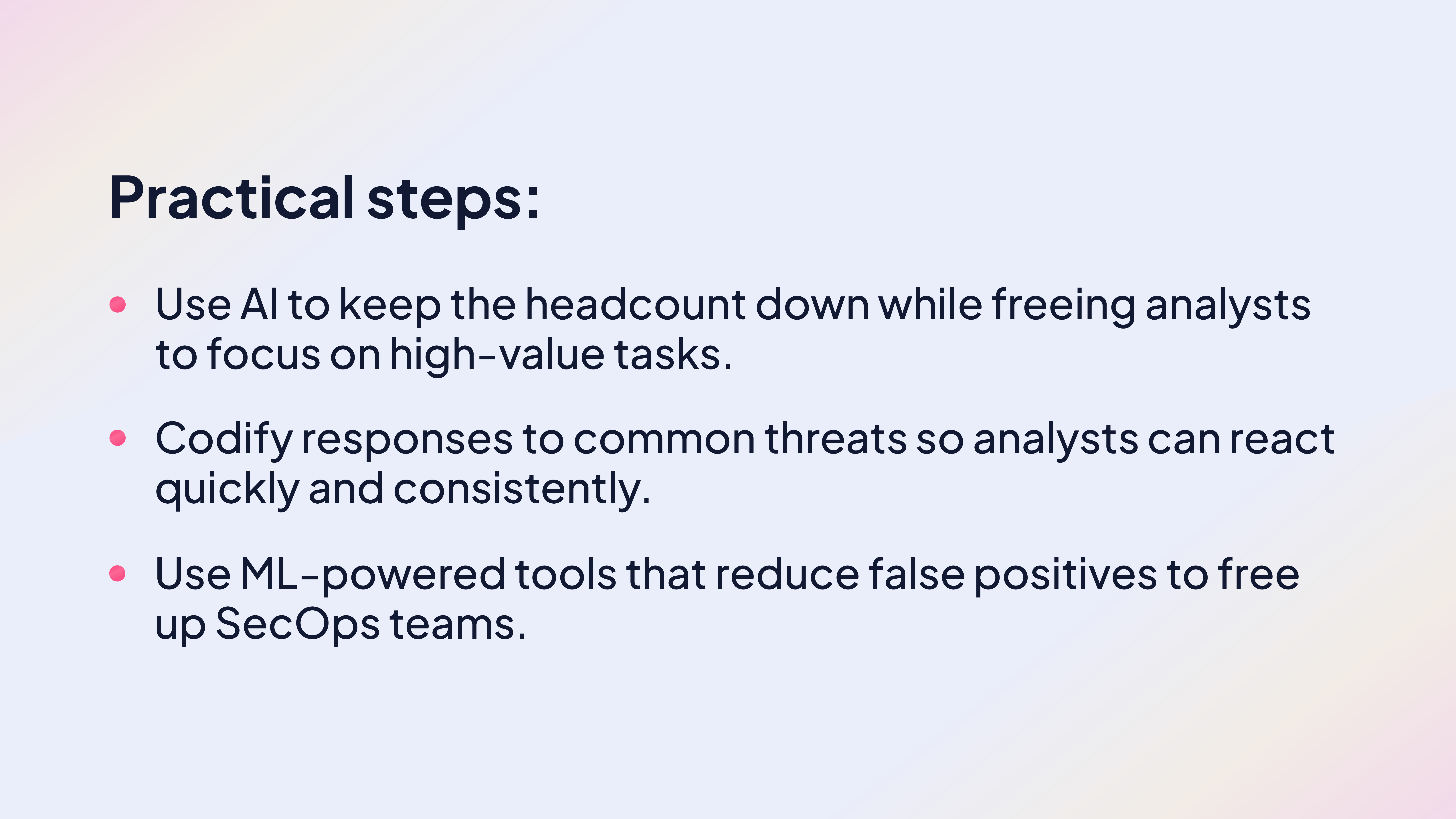
Build a scalable team structure according to specialization
SecOps teams can follow a flat team structure or a tiered team structure. Flat teams minimize hierarchy with little to no management between team members and leadership, promoting agility, quick communication, and a collaborative culture.
A tiered team structure has distinct hierarchy levels with clearly defined roles and responsibilities, emphasizing specialization and chain of command:
-
- Tier 1 analyst: Monitors alerts, does basic triage, and incident response (IR) using a security information and event management (SIEM) system
-
- Tier 2 analyst: IR and threat hunters with more advanced technical expertise
-
- Tier 3 analysts: Senior security engineers and architects for advanced threat analysis, forensics, and strategy
Tiered SOC team vs. flat SOC team
Although flat, small, nimble SecOps teams thrive in smaller organizations, they fall short as enterprises scale. The lack of structure in flat teams makes streamlining operations challenging as your SecOps team expands. For example, sustaining the coordination and specialization needed in larger, more complex environments can become increasingly difficult.
Tiered structures, by contrast, excel at addressing such challenges. They also provide a framework that grows with the organization and ensures efficient incident management.
Regardless of the team structure, SecOps teams today can automate some of this process. When used in a tiered team, a tool like Radiant Security’s adaptive AI SOC platform can easily handle Tier 1 triage, freeing senior and experienced analysts to focus on Tier 2 and 3. It will also boost Tier 2 and 3 teams with transparent remediation recommendations that they can execute via one click or fully automate once they are confident in Radiant’s recommendations.
When new skills are needed
Whenever available staff or AI tools aren’t enough, hire strategically to manage diverse environments, concentrating on skill sets such as automation, cloud security, and DevSecOps.
Bringing on IT specialists and short-term contractors for domains such as AWS, Azure, or Kubernetes security might be unavoidable as your organization moves into public clouds. However, it’s also important to retain staff, so develop clear career paths, for example, Tier 2 to Tier 3 progression, to retain talent. Provide opportunities for functional specializations as well, like cloud security, detection engineering, and red or blue teams.
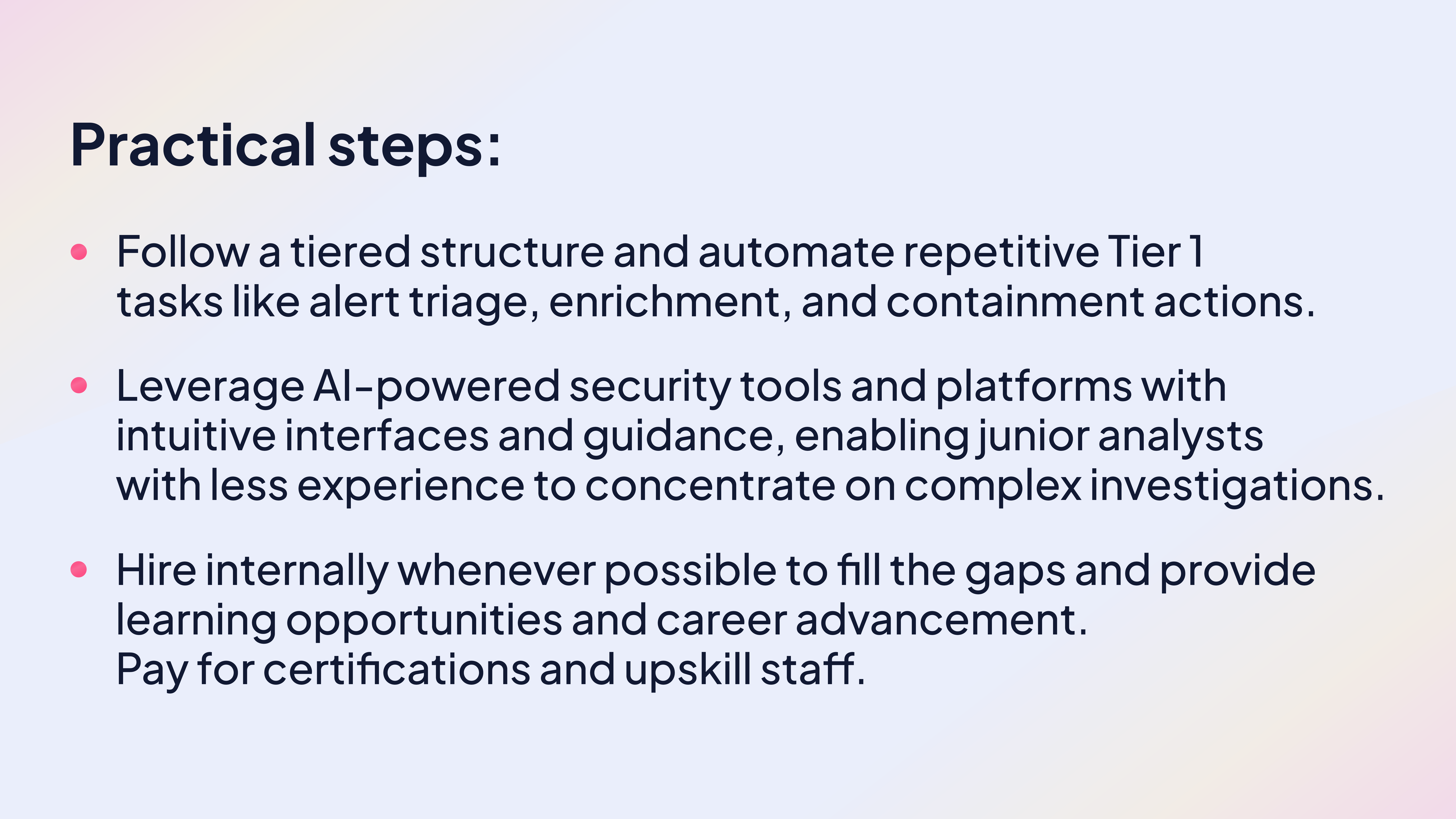
Moving beyond manual playbooks
Organizations must proactively address the growing attack surface to maintain system scalability and resilience. Part of this is ensuring consistency, especially in newly acquired companies, which can be achieved by leveraging AI-driven SOC automation to respond to incidents like phishing, ransomware, and misconfigured cloud resources.
Although playbooks help minimize variability and provide clear, step-by-step guidance, it’s also important to move beyond rigid, manual processes and predefined decision trees. By leveraging AI-powered SOC tools, teams can harness the power of ML to intelligently investigate security incidents in their unique context and in real time.
An AI-powered SOC analyst tool will continuously gather threat intelligence, learn and adapt based on past incidents, and refine defense strategies in real time based on new data. Unlike human SOC analysts, who are constrained by time and volume, AI can quickly connect disparate data points across various networks and cloud environments, uncovering subtle attack patterns that might otherwise go unnoticed.
If an incident occurs, the system will develop tailored investigation paths based on specific incident parameters and then iteratively refine its approach as data streams evolve.
As new data becomes available, it will dynamically adjust its focus, ensuring a targeted and efficient inquiry without being limited by static scripts. This represents a seismic shift from outdated playbook-driven models to truly adaptive analysis.
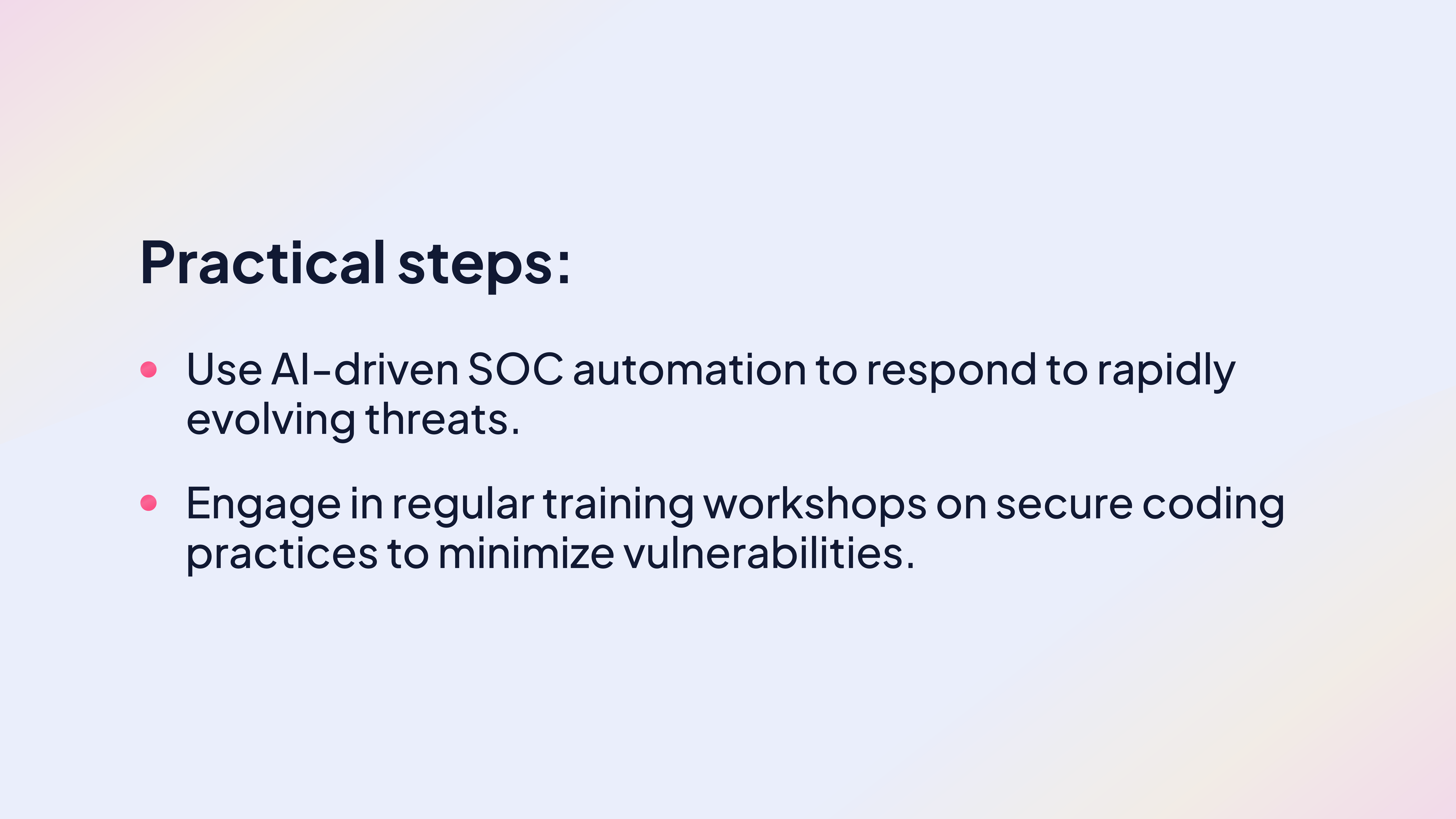
Invest in scalable technology
When managing multi-cloud environments, it’s important to use cloud-native security tools, including cloud security posture management (CSPM). Implement extended detection and response (XDR) to break down security silos by correlating threats across endpoints, networks, and cloud platforms. This approach creates a unified defense strategy with faster detection capabilities.
Zero-trust security strategies are also key. These can protect complex, distributed architectures and harness AI capabilities for advanced anomaly detection and predictive analysis. When SecOps teams follow a Zero-Trust approach, they turn data volume challenges into security advantages.
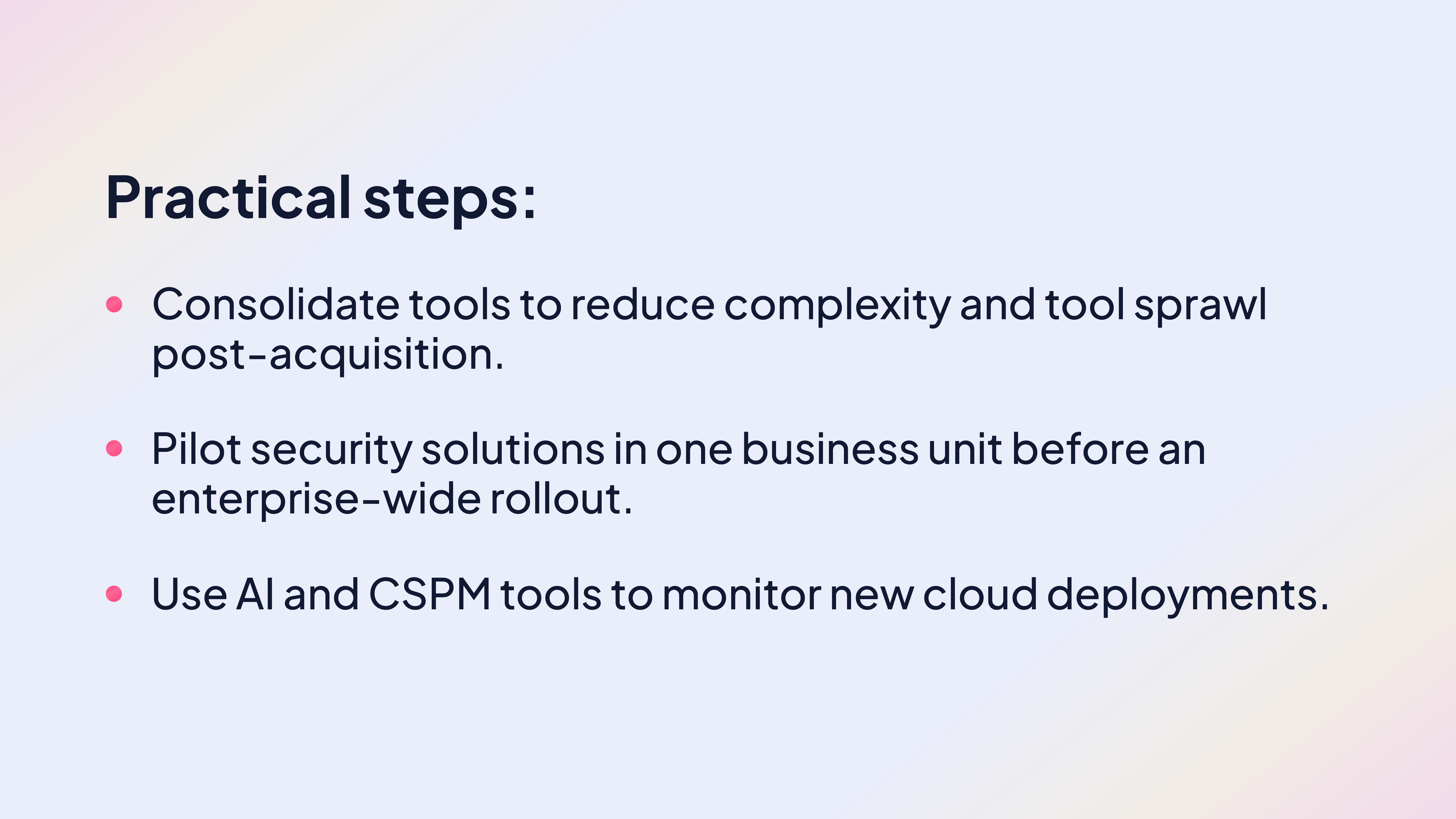
Cultivate a culture of security and collaboration
SecOps teams must establish strong collaborative relationships with IT operations, DevOps, and business units to ensure security scales with organizational growth. This will lead to unified workflows that embed security considerations into all scaling decisions.
Positioning dedicated security champions within development teams provides real-time guidance on secure coding practices while bridging the gap between security requirements and development velocity. Continuous learning through targeted training programs keeps different teams current on emerging threats, evolving cloud security frameworks, and new toolsets.
SecOps leaders must build compelling business cases that quantify their impact on risk reduction and resilience. They must present clear metrics to leadership that justify any increase in budget and resource allocation.
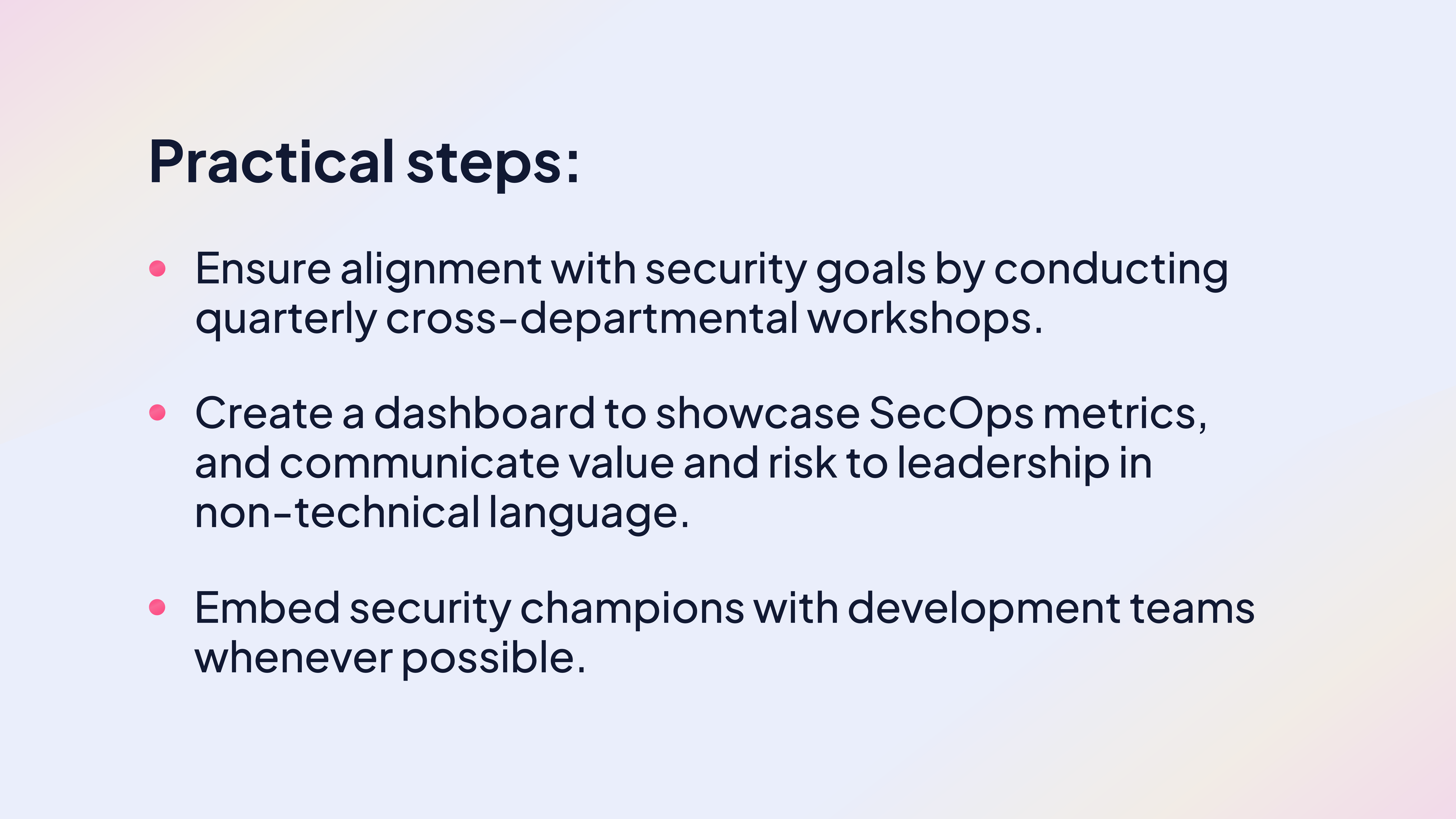
Measure and iterate
SecOps depends on rigorous performance measurement by tracking essential metrics like:
-
- MTTR
-
- Alert volumes
-
- False positive rates
-
- Incident resolution speeds
These insights offer clear visibility into the team’s effectiveness and operational health.
Structured post-incident reviews and systematic employee feedback will help guarantee continuous improvement. They generate practical insights that better inform workflow optimization and tool selection decisions, ensuring security operations evolve based on demonstrated needs and proven results.
Conclusion
As organizations grow, successfully expanding security operations demands a strategic and multi-faceted approach. It’s not about simply adding to the headcount, but finding a perfect balance between people, processes, and platforms that can scale seamlessly while maintaining efficacy and efficiency. Because successful expansion demands a shift from reactive to proactive thinking, SecOps teams must be embedded in strategic planning from the outset. They also need to embrace technological innovation and cultural transformation.
AI-powered platforms, like Radiant’s adaptive AI SOC platform and Zero Trust architectures, provide the technological foundation for successful SecOps growth. At the same time, automated playbooks, tiered team structures, and cross-functional collaboration create the operational framework for a sustained expansion.
Organizations that successfully implement these strategies will turn their cybersecurity operations into a competitive advantage, no matter their size.
Ready to grow your business while supercharging SecOps? Learn more about how Radiant Security can help, or book a demo to see the power of AI-driven SecOps in action.
Back



